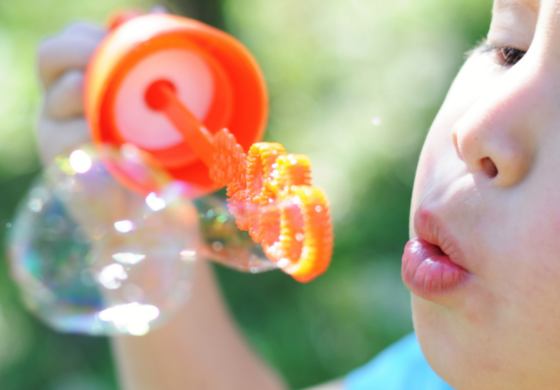If your little one is a selective eater, you might wonder how to go about implementing some of the feeding therapy tips we will talk about below into your child’s daily routine. We believe feeding therapy works best when these strategies occur both in and outside of therapy sessions! The following activities, routine adjustments, and mindset shifts are recommended by feeding therapists to help support progress in feeding therapy while at home. And if you are also wondering if feeding therapy would be helpful for your little one, check out our recent blog post, 10 Signs That Feeding Therapy Might Be Right For Your Toddler.

Messy Play
Lots of children struggle with feeding because it’s difficult for them to touch different textures and get messy! The squishiness and juiciness of raspberries or oranges might be terrifying. The bumpy, rough tops of broccoli may be overwhelming! And don’t even get them started on wet, sticky foods like pudding or jello! Messy play, with a variety of food and non-food textures, is an excellent way to work towards making this aspect of feeding less scary, and it will eventually lead to touching and trying more new foods!

Ideas for Messy Play
Some awesome non-food messy play ideas are making slime, drawing in shaving cream, or even playing outside in sand or dirt! Some messy play activities with food could be mixing food coloring with vanilla pudding to make different colors of paint and “painting” on a baking sheet; using a carrot stick, apple slice, or a bell pepper cut in half to dip in finger paint and make stamps on a piece of paper; painting with oatmeal, or making a sensory bin out of cooked pasta noodles. With food-based messy play, use this time to let your little one explore the food they’re interacting with, without pressure to eat. Research has shown that when kiddos have time to explore a new food in a play environment, they’ll be more likely to try it later!
Structure Mealtimes
Kiddos thrive on routine, especially when it comes to mealtimes. When children have a routine around mealtimes, and they know when to expect snacks or meals, they’ll typically eat better and eat more! A mealtime routine might look like having a meal at or around the same time every day, sitting at the same place for each meal (or most meals), and washing hands together before sitting down to eat. Over time, this will help your little one’s body and brain associate the time of day, the kitchen table (or wherever they eat), and washing their hands with it being almost time to eat! It’s also important to limit grazing, or snacking when it’s not snack time, in order for the routine to be most effective.
Eat the Same Food as Your Child
One of the best things you can do to support your little one at home to try new foods? Eat what you want your kids to eat! They won’t want to eat zucchini or carrots if they don’t see you or anyone else they know and love eating them! It’s also so, so helpful to sit down with your kiddo at the dinner table and eat your food while they’re eating. This lets them see what’s on your plate, and you’ll be able to model trying and touching different foods. And we know how challenging this may sound– between being a parent during a pandemic and having a selective eater, we can imagine all of the challenges on your plate (no pun intended) right now! However, if you can sit down with your child and eat with them for 5-10 minutes, we truly believe it will support their eating habits and routine.
Play with Food
We talked about messy food play above, and playing with food at the table is just as important! If your little one doesn’t want to taste, touch, smell, or even look at the food on their plate, well– that’s perfectly fine! It’s not your job to make them eat, and we don’t encourage pressuring little ones to eat or to take “one more bite.” What you can do instead is to make mealtime interactions fun. Use cookie cutters, basting brushes, paper towel tubes, or salad spinners to interact with foods in new and novel ways. Maybe your kiddo wouldn’t dare pick up a blueberry to eat, but if you encourage them to push the blueberry down the slide (paper towel tube), that’s a different story. Research has found that time and time again, children do better with trying foods if they’re allowed and encouraged to play with their food, and this is a huge aspect of feeding therapy that you can add to your daily routine at home.
Have Oral Motor Toys Available
Oral motor toys are so helpful to support jaw strength, coordination of the muscles in the mouth and encourage movements of the tongue that are needed for feeding. These types of toys and items include chewy toys, straws, bubbles, and windmills. All of these toys, and other ones like them, help little ones learn how to coordinate and control the muscles and movements in their mouth. Having toys like these available in a box or basket for your child to freely reach for, in addition to using them to “warm-up” before mealtimes can be immensely beneficial. For example, before eating, try blowing bubbles for a few minutes, chewing on a chewy toy, or racing to see how fast you can blow a pom down the hallway with a straw!
Imitate Face and Tongue Positions in the Mirror
An easy activity to add to your daily routine that might be hugely beneficial if your child needs feeding therapy or is in feeding therapy is before or after brushing teeth, take turns imitating each other making funny faces in the mirror! Stick your tongue out and encourage your child to do the same. Open your mouth wide and move your tongue from side to side. Pretend to be a lion and move your lips up to bare your teeth! These are all skills that are helpful and needed in feeding, especially as children develop more body awareness of their mouth and tongue. Modeling at home can help these skills to come along even faster.
If you read through this and are now wondering if your child needs support through feeding therapy, book a FREE consultation with one of our highly skilled occupational therapists today!

